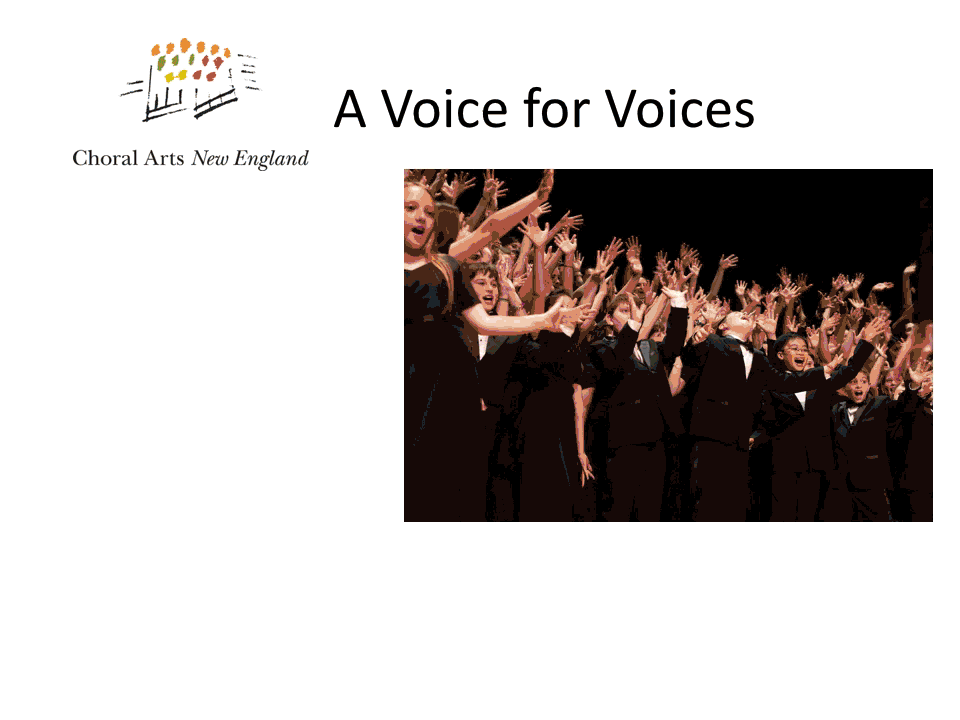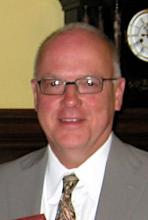Reflections on Choral Music from Richard Coffey
It is a Sunday in 1960, late afternoon at the Coffey house in High Point, North Carolina, and all activity ceases while a 12-year-old boy calls for silence as he dials in the “educational network” on the big Emerson radio, asking everyone to be seated to hear the historic (even then) weekly broadcast of the Mormon Tabernacle Choir (today called The Tabernacle Choir). Being that boy, I continue to wonder why I was not dubbed “odd” at such an occurrence and also why the whole family cooperated so fully (including my two older brothers-in-law, who agreed to turn off the sound on their ubiquitous TV sports-watching, at least for this special half hour). The sound of voices singing to the accompaniment of a great organ captivated me beyond measure back then and established the path I would follow with unbridled passion for the next sixty years (and still counting). The sound of voices in choral ensemble can be ravishing, exciting, devastating, hypnotic, and inspiring. It is such a sound that fueled the fire within me to set out to be a “choral fanatic,” following a path wending its way deeply, even permanently, through the church and its music, and thence to the great symphonic choral repertoire of the ages.
The Tabernacle broadcasts determined family gift-giving aimed at me. No footballs, but rather, Columbia recordings of Messiah conducted by Ormandy and with the Tabernacle Choir came my way. Next were the LPs of the Robert Shaw Chorale, those Christmas ones, with arrangements by Shaw and Alice Parker, and then Shaw’s historic recordings of Messiah and the B Minor Mass (both in period musical garb, well before “period” was in fashion). These musical confluences gained strength through my role (early teens) as organist for the family church, and by age seventeen, its choir director. The unexpected income ($10.00 per week) made it possible for me to upgrade our radio from Emerson to Magnavox, allowed me to establish a savings account, and, of course, to tithe $1.00 a week to the Baptist church. The die was cast. I was to become a “conductor” (though I don’t think that was the correct word at the time; premature, in fact).
All this is to say that none of us knows how early in life the “choral bug” will bite, and we who are now “In the trade” can keep an eye out for those who may be following in our footsteps, which is why the work of such organizations as the American Choral Directors Association and Chorus America and Choral Arts New England is so important in embracing and supporting the hopes and dreams of choruses, their directors, and their audiences. CANE, and its precursor organization, The Alfred Nash Patterson Foundation, set a standard of generosity that is remarkable at every turn. In fact, it is one of the few foundations who will write a letter that says, “We’d like to help you out; send us a request.” As a CANE Lifetime Achievement Award winner, I can attest to the efficacy of such largesse in the course of my own work which has included the establishment of the all-professional concert choir CONCORA, The Main Street Singers children’s choir of New Britain, The Music Series of South Church, and now my work with the Hartford Chorale, a major symphonic chorus in southern New England.
When one’s life work is set in motion by, sustained by, guaranteed by, honored by, and loved by a particular institution, that institution merits praise, appreciation and gratitude. Many in our field can (and should) lay claim to such a powerful and inspiring womb or nest or cradle or safe-place or launch-pad. We as conductors can always identify the teachers, professors, and schools that changed our lives by believing in us and by cheering us on as we charted our course of wrestling with and loving the sounds of words set to music. For me that institution was the church, a very specific one, the South Church of New Britain, Connecticut, taking a leap of faith by handing over all of its musical endeavors to an impetuous twenty-four-year old who was fueled and wired by a daily discovery of new (or newly-revealed) music, of idea-after-idea as to how to make music vital to a community eager for enrichment, adventure, and a vision of broader and higher horizons of great art. The clergy and people of South Church gave carte blanche to me, stood by me, embraced my goals, still being made manifest forty-five years later, at my departure in 2017, from the institution that made all of my dreams come true.
Let us not lose sight of those who, as individuals or institutions, have helped us make music, who agree with us that music, especially choral music, may be the best evidence of eternal life, not in the heavenly sense, but in the awareness that when we sing, we bring music to life, and that same music brings life to others in return. Institutions of inspiration can be schools, conservatories, churches, synagogues, and concert halls, and institutions of inspiration can be foundations and boards and corporations and believers in good things, such as Choral Arts New England, soon, it seems, to embark upon broadening its impressive reach by growing its financial resources for one reason, and one reason only: to give those resources away, to encourage, motivate, inspire, and make possible musical adventures that might otherwise not be possible. In so doing, the Foundation will continue to be a womb, cradle, nest, launch-pad, and safe place for the art of music, and most especially the first art, that which is prehistoric, the music of the voice. The Foundation will keeps its eyes and ears open not only to the needs of high-end, noble, vibrant, large-scale, and meritorious enterprises, but will, I am sure, keep its eyes and ears alert to the twelve-year-old beginning to understand that music-making is a call, perhaps even a call to become a “choral fanatic.”
Richard Coffey, BMus., SMM
Music Director, The Hartford Chorale
Artistic Director Emeritus, CONCORA (Connecticut Choral Artists)
Artistic Director Emeritus, The Music Series at South Church
Minister of Music Emeritus, The South Church of New Britain, Connecticut
June 27, 2019








